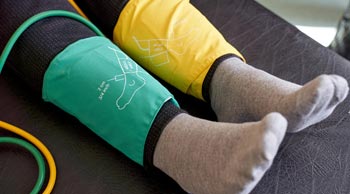What is Peripheral Arterial Disease
 Peripheral arterial disease (PAD) is a circulatory problem in which arteries have narrowed and the blood flow to your limbs is reduced. With PAD, your legs or arms don’t receive enough blood flow to keep up with demand which can cause leg pain when walking (claudication).
Peripheral arterial disease (PAD) is a circulatory problem in which arteries have narrowed and the blood flow to your limbs is reduced. With PAD, your legs or arms don’t receive enough blood flow to keep up with demand which can cause leg pain when walking (claudication).
PAD is likely to be a sign of a buildup of fatty deposits in your arteries (atherosclerosis), which may further narrow your arteries and reduce your blood flow. Eating a healthy diet and quitting smoking can help reduce your risk of PAD.
Claudication symptoms include muscle pain or cramping in your legs or arms triggered by physical activity, but disappears after rest. The location of pain from claudication depends on the location of the artery in question. Calf pain is the most common location.
Severity of claudication varies from mild discomfort to debilitating pain. Severe claudication can make it hard for you to walk or do other types of physical activity.
Symptoms
Peripheral artery disease signs and symptoms include:
- Painful cramping in one or both of your hips, thighs or calf muscles after certain activities, such as walking or climbing stairs
- Leg numbness or weakness
- Coldness in your lower leg or foot, especially when compared with the other side
- Sores on your toes, feet or legs that won’t heal
- A change in the color of your legs
- Hair loss or slower hair growth on your feet and legs
- Slower growth of your toenails
- Shiny skin on your legs
- No pulse or a weak pulse in your legs or feet
- Erectile dysfunction in men
- Pain when using your arms, such as aching and cramping when knitting, writing or doing other manual tasks
- Pain may occur when you’re at rest or when you’re lying down, in advanced stages of PAD. Pain may be intense enough to disrupt sleep.
Risk Factors
Risk factors for peripheral artery disease include:
- Over age 65
- Over age 50 and have a history of diabetes or smoking
- Under age 50 and have diabetes and other peripheral artery disease risk factors, such as obesity or high blood pressure
- Atherosclerosis – fatty deposits build up on your artery walls and reduce blood flow.
- Less commonly blood vessel inflammation, injury to your limbs, unusual anatomy of your ligaments or muscles, or radiation exposure.
- Smoking
- Diabetes
- Obesity (a body mass index over 30)
- High blood pressure
- High cholesterol
- Increasing age, especially after age 65 or after 50 if you have risk factors for atherosclerosis
- A family history of peripheral artery disease, heart disease or stroke
- High levels of homocysteine, an amino acid that helps your body make protein and to build and maintain tissue
Complications
Potential complications from peripheral artery disease include:
- Critical limb ischemia. This condition begins as open sores that don’t heal, an injury, or an infection of your feet or legs. Critical limb ischemia occurs when the injuries or infections progress and cause tissue death, sometimes requiring amputation of the affected limb.
- Stroke and heart attack. The atherosclerosis that causes the signs and symptoms of peripheral artery disease isn’t limited to your legs. Fat deposits also build up in arteries supplying blood to your heart and brain.
Prevention
Peripheral artery disease can be prevented by:
- Quitting smoking
- Managing your blood sugar
- Exercising regularly
- Managing your blood pressure and cholesterol levels
- Eating foods low in saturated fat
- Maintaining a healthy weight.